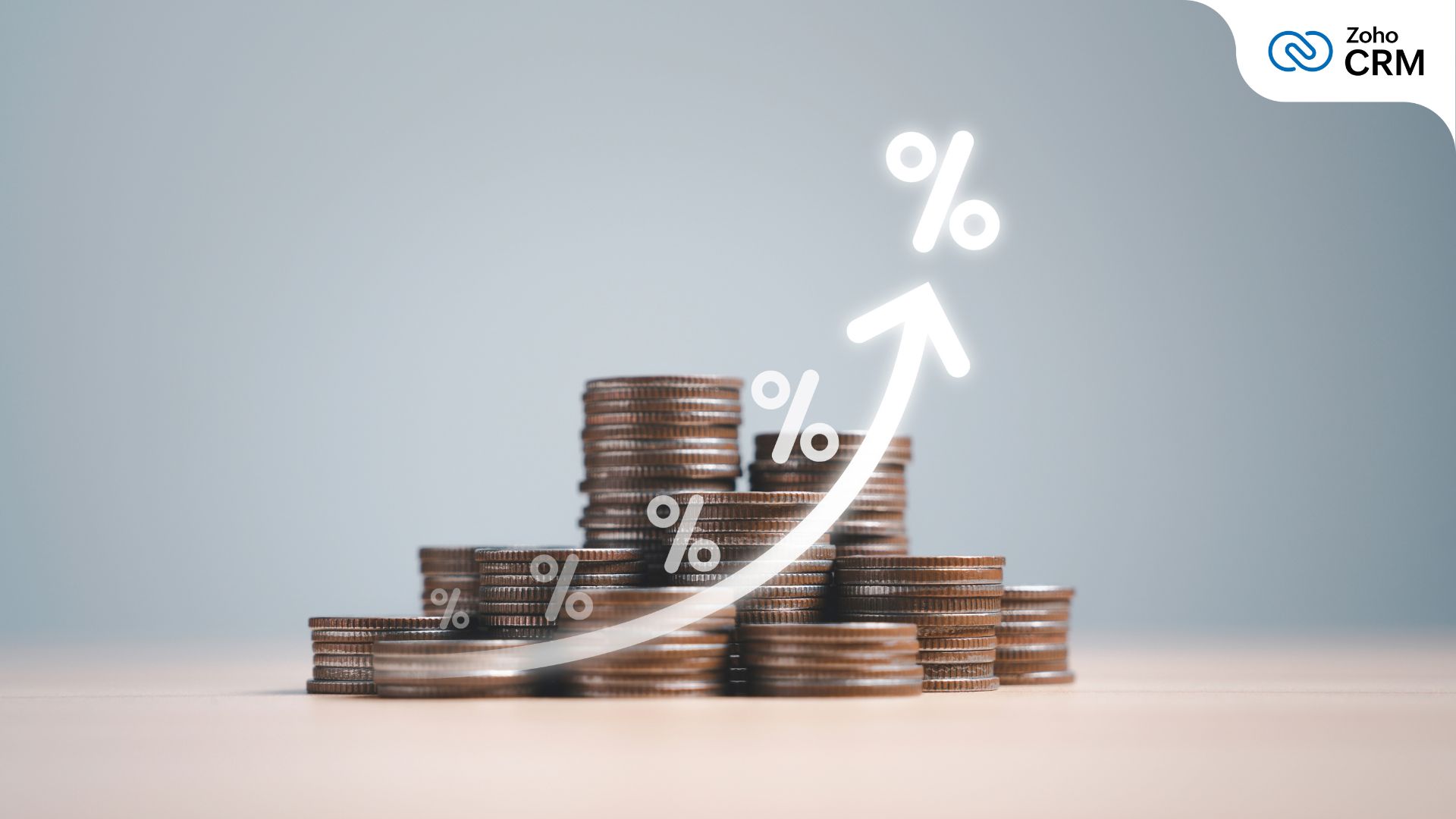Your guide to understanding sales velocity: Definition, formula, and analysis
- Last Updated : October 15, 2024
- 918 Views
- 5 Min Read

Sales is the bloodstream of any business. To ensure sustenance and growth, it's important that businesses analyze their sales from time to time to identify bottlenecks and strategize how to overcome them. One metric that can help businesses understand and identify problems better is sales velocity.
What is sales velocity?
Sales velocity is a metric that can help you understand how quickly deals navigate through your funnel and start generating revenue, and it relates to four factors:
The total number of opportunities in your pipeline
The average value of your deals
Your win rate
The length of your sales cycle (in months)
One major benefit of tracking your sales velocity is that it can help you with sales forecasting. By analyzing how quickly you're converting leads, you can forecast your future sales to manage your resources and strategies more efficiently. Keeping an eye on your sales velocity can also help you identify and resolve problems in your sales cycles.
How to calculate sales velocity
Sales pipeline velocity can be calculated by using the following formula:

Let's take a look at each component of the sales velocity formula:
Total number of opportunities: This is the number of opportunities that exist in your pipeline at any given time. It's recommended that you take into account qualified leads only while calculating your sales velocity to get a more accurate result. What checks as a qualified lead may vary depending on your business and its target audience.
The average value of your deals: An average deal size is the average value of individual deals closed by your company expressed in terms of monetary value. To calculate the average value of your deals, you can simply divide the total revenue earned from deals won with the total number of deals won.

Your win rate: Your win rate, also popularly known as your conversion rate—is a measure of how many opportunities your sales team can convert into closed deals. Your win rate percentage can be calculated by dividing the total number of deals won by the total number of deals and multiplying it by 100.

The length of your sales cycle: The length of your sales cycle refers to the total time it takes a prospect to go from making initial contact to becoming a paying customer, and relates to the amount of time required to proceed through all the activities and stages involved. You can calculate the average length of your sales cycle using the following formula:

Tips and best practices for calculating accurate sales velocity
Here are some pointers to keep in mind while calculating sales velocity to get a more precise understanding of your sales cycle:
Break down your opportunities: To get more detailed insights, you should divide your qualified leads into different segments based on their industry or company size (small, medium, or enterprise). This can help you understand segment-specific behavior and derive a clearer picture of what's working and what's not.
Metrics for subscription models: If you're a SaaS business that runs on a subscription model, using average customer lifetime value (CLV) instead of average deal size can help you get a better picture of your business. CLV can be a better metric because your revenue from a customer isn't limited to the money you earn when the deal is closed; instead, they're a source of recurring revenue.
Use up-to-date data: Make sure you use data that's up to date to get a real representation of your sales. Using outdated or inaccurate data can result in misinterpretations and can sway your decision-making and strategies.
Calculate for a longer period of time: While sales velocity can be calculated for any period of time you wish to, it's recommended that you calculate it over longer periods like every quarter, half-year, or year. By increasing the length of time you're considering, you can mitigate the effects that seasonality and unusually long deals have on your overall sales velocity figure.
Interpret results with caution: While sales velocity offers insights into the health of your sales cycle, it isn't the only metric that does so. You should also consider other factors alongside it, like customer retention and churn, to get a more accurate picture of your sales.
How to improve sales velocity
Since sales pipeline velocity is largely dependent on the four factors we discussed earlier, improving your sales velocity means improving those four factors. Here are some ways you can bring a positive change to your sales velocity:
Offer discounts: While offering discounts can bring your overall revenue down, it acts as an incentive for prospects to close deals faster; thereby reducing the length of your sales cycle. If used discretely, discounts can be a good strategy to increase your overall pipeline velocity.
Improve lead quality: Sourcing leads that have higher chances of conversions can help you clear your pipeline faster and with less effort from salespeople, which also gives them more time to deal with other prospects. Identify which marketing channels work best for you and invest in them more to get better quality leads. Remember: quality over quantity.
Upselling: Take time to understand your customers and their pain points. While you can't force your products onto them, you should try to address their issues with your offering and onboard them into the other products in your suite. This will increase your overall deal value and attract customer loyalty.
Qualify your leads: By establishing a rigorous lead qualification procedure, you can identify leads who exhibit high intent and focus on them. By personalizing your messaging, involving the decision maker in their organization early on, and building a deeper connection with these prospects, you're likely to close more of these deals, which in turn boosts your win rate.
Adopt automation: Streamlining repetitive and mundane tasks using sales automation tools can help your sales reps allocate more time to what they're best at: selling. Additional enhancements like AI integrations can assist your salespeople by giving insights like the best times to call customers, customer sentiments, and more. Additionally, setting up bots can help take the load off your reps by answering frequently answered questions instantly and improving average response time.
While sales velocity is an excellent metric for judging your sales, a metric is only as good as the data that informs it. Make sure you have a robust CRM system that gives you up-to-date data so you have a true picture of what's happening with your sales. We recommend that you use this metric in conjunction with other sales reports and analyses to get a fuller and clear understanding of your sales pipeline.


